Today I am excited to introduce you to Margaret Bloom, the author of Making Peg Dolls, one of our bestselling books at Bella Luna Toys, and one of my very favorite crafting books!
Margaret has just published her second book, Making Peg Dolls & More. In introducing this enchanting new book, I thought it would be fun to interview Margaret, and learn more about her.
And to celebrate the launch of the book, Bella Luna Toys is happy to offer readers 10% off on both Peg Dolls books, as well as on our wooden peg forms, wool felt sheets, and opaque watercolor paints, everything you need to start creating your own collection of peg dolls! (Use code PEGDOLLS through February 28, 2015.)
For now, I invite you to pour a cup of tea and take a few minutes to get to know Margaret. I hope she inspires you to try your hand at this simple craft! If you have your own question for Margaret, leave a comment and she’ll answer as soon as she can.
SARAH: Welcome, Margaret! Can you tell us how you got started crafting and what some of your influences were?
MARGARET: No one will be surprised to know that, as a child, my favorite toys were tiny things–mice dressed up in whimsical outfits and small dolls for whom I stitched clothes!
But beyond always loving small, fanciful things, there are some strong influences from my childhood for my peg doll designs.
First is the book The Prancing Pony by Charlotte B. DeForest with artwork by Keiko Hida. It was given to me as a gift when I was four-years-old by my aunt and uncle who were living in Japan at the time; I read the peculiar Japanese nursery rhymes over and over, but what captured my imagination most about this book was the gorgeous art work illustrating the poetry.
I had always thought the artwork was a traditional Japanese style, but recently, after carefully reading the foreword to the book, I learned that this collage style is unique to the illustrator. The illustrations, created using textured Japanese paper, tinted with vegetable dye, feature images of kimono-clad children with minimal facial features and large, round heads.
When I was working on the “Kodomo no Hi” dolls in my first book, I referred to these illustrations when determining colors for the kimono and obi on my dolls.
The second influence is Mary Blair who was one of the chief designers on the ride “It’s a Small World” at Disneyland.
I grew up in Los Angeles, and so visits to Disneyland were an exciting part of my childhood. My favorite ride has always been “It’s a Small World,” and I remember, as a child, admiring the murals [on the walls outside the ride] that Mary Blair designed. Sadly, those murals at Disneyland are now gone, but you can still see Mary Blair’s designs inside “It’s a Small World.”
(Disney is not a very Waldorf-congruent corporation, I know, but there’s no denying that “It’s a Small World” is very special!!)
SARAH: Can you tell us about the origin of peg dolls?
MARGARET: If you watch children playing, you will often see them imitating traditions and activities which surround them in their daily lives–so, it’s a very natural part of a child’s play that he or she might pick up a small stone or twig and cradle it gently as though it were a baby. To nourish and encourage this play, along the way in human history, caring adults have molded clay or carved stone, wood or ivory with a simple head, added a little face, and perhaps arms and legs.
Many countries all over the world have unique traditions for doll designs which closely relate to peg dolls: In Egyptian tombs, wooden paddle dolls date back as early as 2000 BCE; there are stories from ancient Greece describing girls playing with dolls; and dolls have been found in the graves of Roman children. Africa has a tradition of Akua’ba dolls, in Japan there are kokeshi, in Russian there are matryoshka dolls and American Hopi tribes create Kachina dolls.
Following a history of using materials on hand to create dolls, it’s not surprising that laundry pegs, with the rounded knob on top, lend themselves to doll making! In the handcraft tradition of Waldorf education from Germany, the legs of clothes pegs were removed to create small wooden bases on which dolls could be designed. These little dolls have traditionally been crafted into seasonal figures for nature table displays and imaginative play within home and classroom.
SARAH: How did you go from creating peg dolls to writing books about them?
MARGARET: After seeing some simple peg doll projects online, I bought three blank pegs and made my first doll. Then I made another and another (and then bought additional pegs to continue making dolls). I gave most of the dolls away as gifts but still had more peg dolls than seemed reasonable. I had no interest in making dolls to sell and so started thinking about what I wanted to do.
At the same time, I was posting photos of the dolls on my blog, and received requests for tutorials explaining how to make them. After writing up a tutorial for my owl doll, I realized it could be the basis of a book proposal and proceeded from there.
SARAH: Your original book, Making Peg Dolls, has been a huge hit with our customers! How is your new book different?
MARGARET: The idea behind the new book is that I wanted to bring peg dolls off the shelf and out of the doll house to spin, fly and travel about in the larger world, so in the new book you will find projects using peg dolls to make hanging mobiles, spinning tops, and necklaces. There are also dream pillows, decorations for birthday & wedding cakes, and even a useful pin cushion which incorporates a peg doll!
SARAH: Can you describe your work space?
MARGARET: Contrary to what you might think, I do not have a workroom or studio. Our house is very small (especially by American standards) and so there is no other space in the house for me to work except our kitchen table.
Nearly all my supplies are in a cabinet in the corner of the kitchen. Inside are two boxes of felt, two boxes of wooden pieces, a box for paint and pencils, a box for paper supplies, a box for beads and glitter, and a box for natural items such as acorn caps and seashells plus miscellaneous bits and pieces such as pipe cleaner wire, floral wire, and so on.
In virtually every tutorial on my blog, if you look carefully, you will see my kitchen table! Even the photo on the cover of my new book was photographed in my kitchen. Over the table there is a big window and the light is especially beautiful in the morning.
SARAH: Tell us about your family. How do you balance work and family?
MARGARET: My husband Paul and I have two sons who are now ages 4 and 11. My younger son was only 15 months old when I received the contract for my first book, and so I was very busy–so busy that I often wondered at my sanity for taking on a book project at that time!
I was able to do most of the work on the book while my little one slept in the afternoons, but I needed to be very disciplined about only working on the book during this time. I did not allow myself to wash dishes, fold laundry, or anything else while he was asleep.
Because I don’t have a dedicated work room, even now, I still need to be careful about putting my projects away when my younger son is awake; if my projects and supplies are not put away, every pin will be unpinned, every piece will be rearranged, and everything will end up scattered through the house!
As for balancing work with the needs of my family, that’s a difficult question because it’s a difficult balance. All I can say is that I do my best to meet my deadlines and still get dinner on the table at a reasonable hour in the evening. I try not to fret too much when deadlines are not quite met nor when dinner is late and piles of laundry have taken up residence in the sitting room (but I freely admit that I’m better at fretting than not!).
SARAH: What other crafts do you enjoy besides making peg dolls?
MARGARET: I love knitting and sewing small gifts for my children and for friends; on my blog there is a page where you can see tutorials for many other crafts I’ve made.
I would love to sew and knit more clothing, but right now I don’t have the time (or work space) to take on larger projects. With young children in the house, small projects, like peg dolls, are just right!
SARAH: Your animated video featuring your peg dolls is adorable! Did you make it yourself?
MARGARET: Yes, Paul and I created the animated videos featuring the peg dolls. Paul has a BFA in photography and worked for many years as a commercial photographer before transitioning into his current job.
We have a table set up in our garage with a backdrop and lighting where we took most of the photos for both books; when taking the photos, I direct the styling and design, while Paul specializes in the more technical aspects. Without his eye for lighting, composition, focus and digital editing, neither the photos nor the videos would look nearly as lovely as they do!
SARAH: What advice would you offer a beginning crafter who’d like to try making peg dolls? What materials are needed to start?
MARGARET: My advice is to get some blank dolls, some pencils, paint, a few scraps of felt and try your hand at it.
When I facilitate workshops with children, I’m always amazed by the freedom with which they approach the materials–they are innovative in ways I can never imagine.
Most adults (myself included) are hindered by fears of trying something new. Add to this a penchant for perfectionism and these fears are difficult for adults to overcome, but I recommend just sitting down with a few basic materials and getting started. You might have fun and never want to stop! Four years ago I’d never made a single peg doll in my entire life, and now I’ve written two books on them!
Thank you, Margaret! For more inspiration, be sure to visit Margaret’s blog “We Bloom Here,” where you will find a treasure trove of craft tutorials.
Have you made Peg Dolls? Has this interview inspired you to try? Please share your comments and creations with us, and happy crafting!

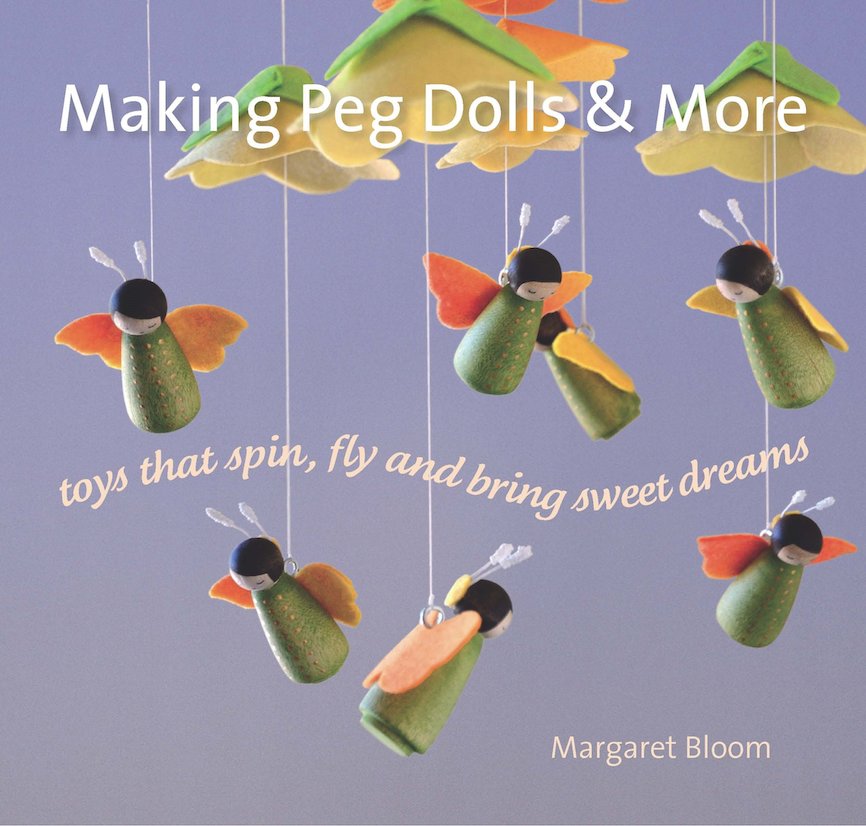

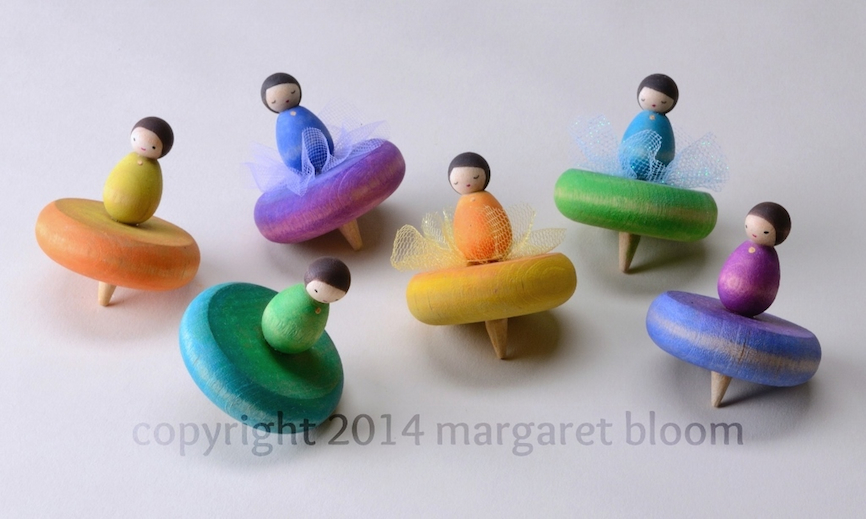
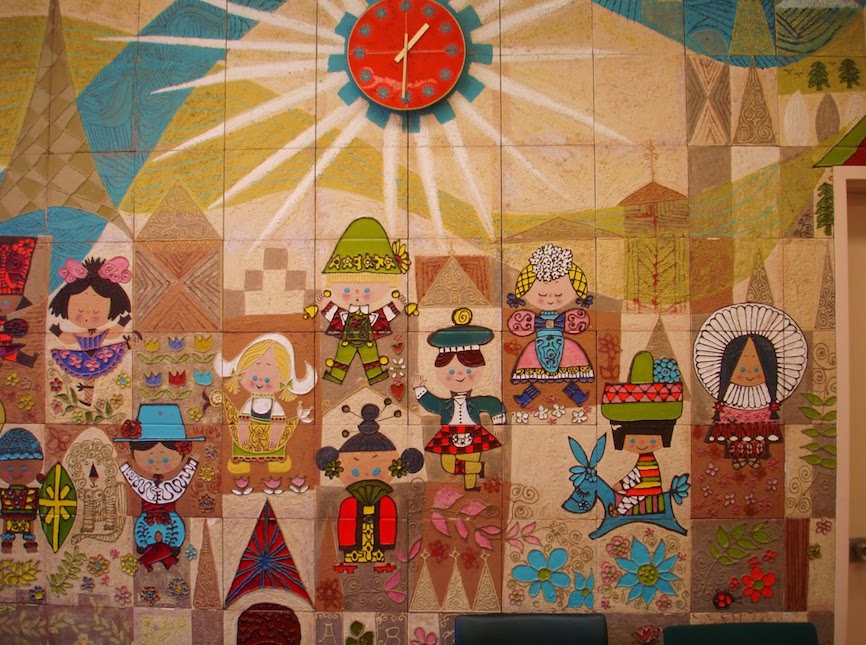

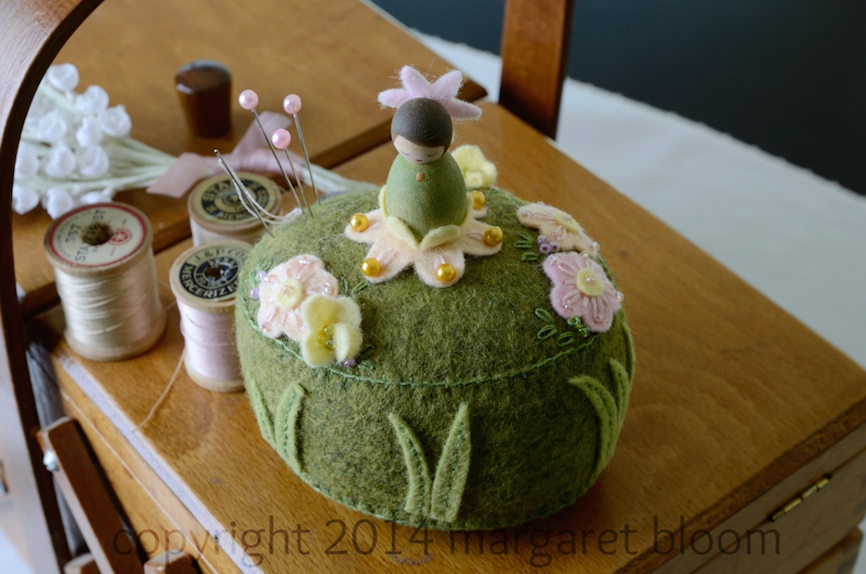
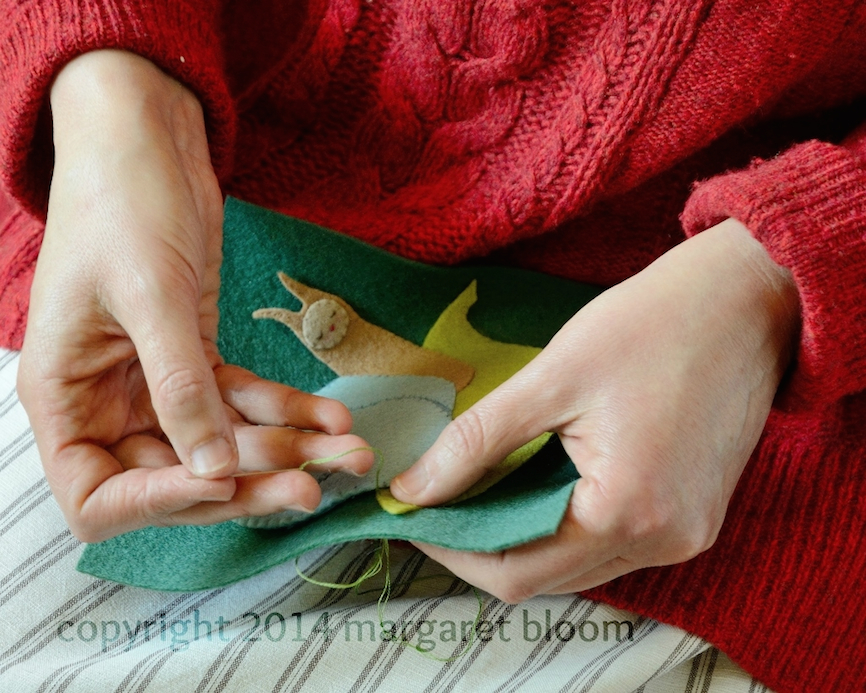
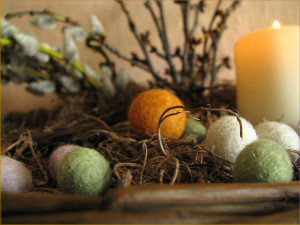

5 Comments
I haven’t made any dolls yet, but I want to make some Bible figures for the boys I work with on Sunday morning. Any ideas?
What a great idea, Katie! This should be easy to do, dressing the peg dolls in “robes” of felt, and you could even glue on bits of wool as a beard for characters like Noah. You could then use them as puppets when telling Bible stories. If you decide to do it, I hope you’ll share pictures!
Sarah,
The peg dolls are wonderful, and I have been painting different sets for my grandchildren for the past couple of years. I’ve seen for sale online Disney princess peg dolls, superhero peg dolls, and other famous characters depicted on peg dolls. I’m getting requests to make these for sale—my question/concern is are there any copyright issues with selling the dolls with the well-known images on them? Thank you for your help.
Hi Julie. Disney images and superheroes from Marvel and such are copyrighted and would require expensive licensing agreements in order to sell products using their images. If you wanted to make them for your own use or to give as gifts, that shouldn’t be a problem, but it would not be legal to sell them.
What a charming book! It is a beautiful book full of wonderful ideas and the illustrations are lovely with clear easy directions. It also leaves room for you to use your imagination and the possibilities are endless. So far I have made the peg people but am planning on having the children in my classroom make them too! What a fun book!